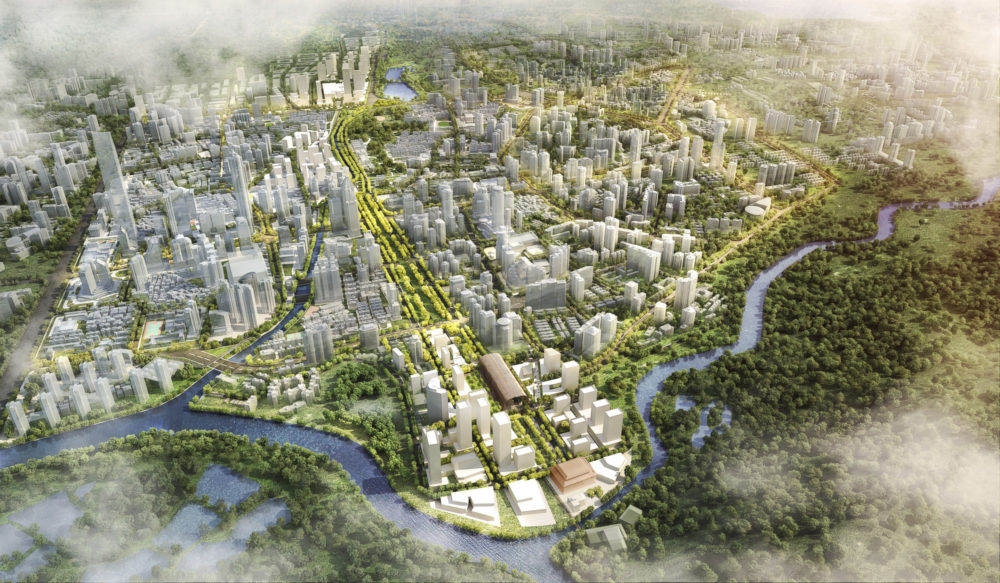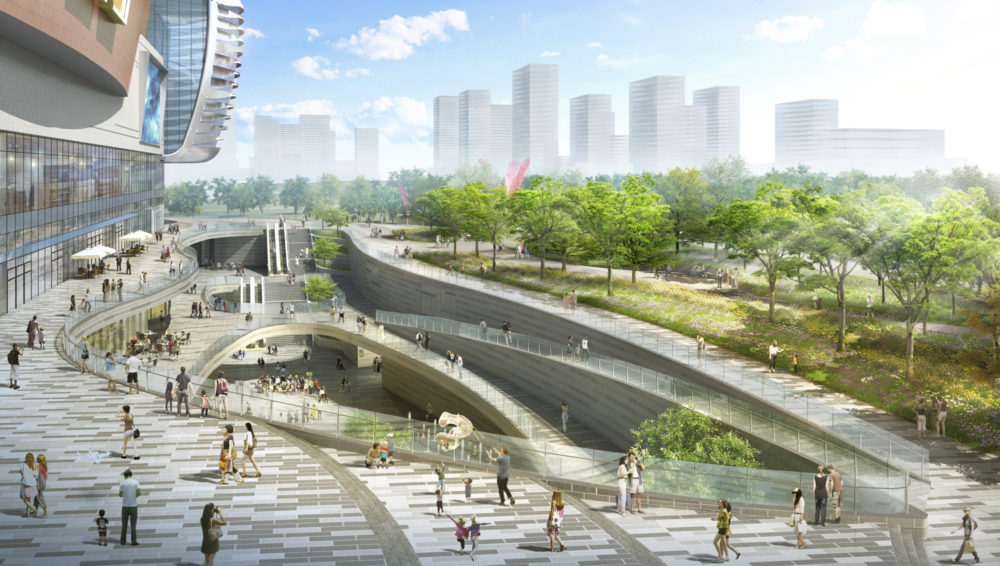Healing a physical and mental divide along 12.5 linear kilometers of prime waterfront in the center of Shanghai
Suzhou Creek
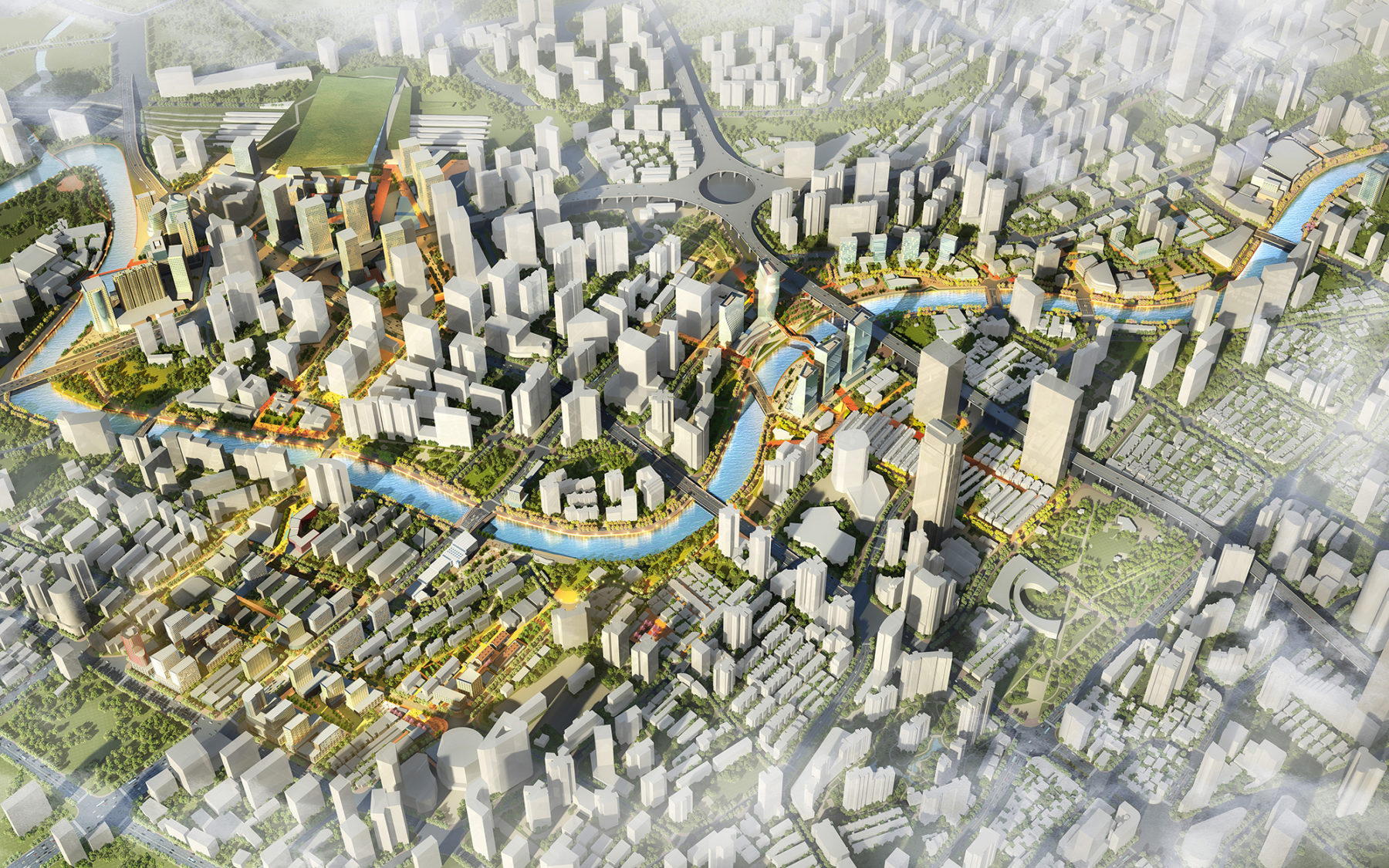
The meandering Suzhou Creek intertwines with a new undulating urban spine, delineating a series of urban and recreational nodes along the riverfront.
Sasaki was selected as the winning team for the international competition to redesign Suzhou Creek in Shanghai, China. Suzhou Creek was historically one of Shanghai’s most vital water routes, but in recent decades suffered from pollution and neglect. With a grant from the Asian Development Bank, the waterway is now clean and ready to reclaim its role as a centerpiece of the city.
In 2015, two city districts abutting the creek combined. With the south bank in the wealthy and cosmopolitan Jing’an District, and the north bank in the socially underrepresented Zhabei District, Suzhou Creek was a physical and mental divide that underscored the dichotomy of contemporary Shanghai. With this new administrative change, however, 12.5 linear kilometers of prime waterfront in the center of Shanghai were now unified. The Sasaki plan capitalizes on the merger of municipal districts as a catalyst not simply for development, but for the renewal of a once disenfranchised waterfront to address vast physical and social gaps in the city’s fabric.
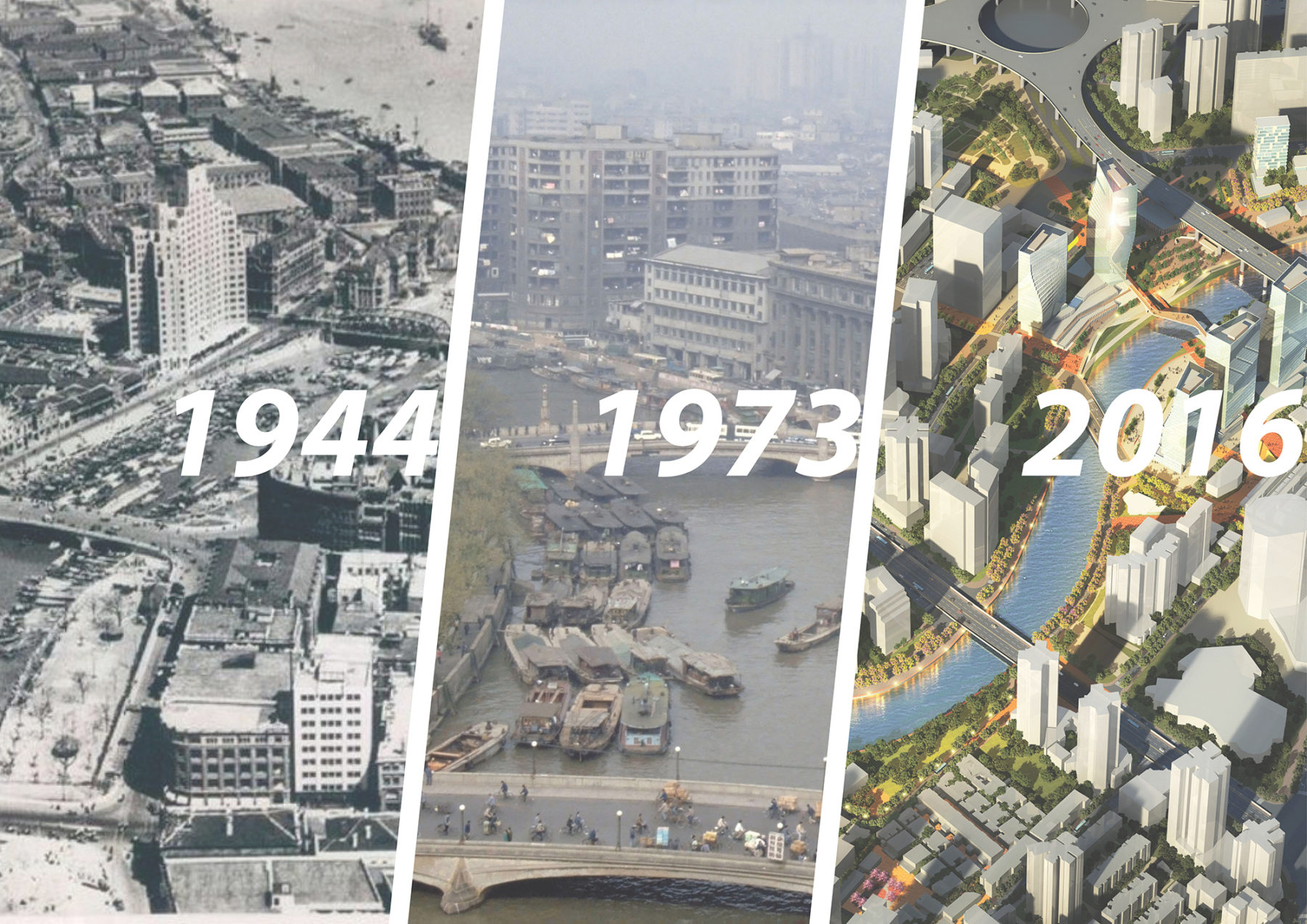
Suzhou Creek has witnessed the genesis of Shanghai’s industrialization, suffered from severe environmental degradation, and is finally poised to be celebrated as the city’s newest public waterfront.
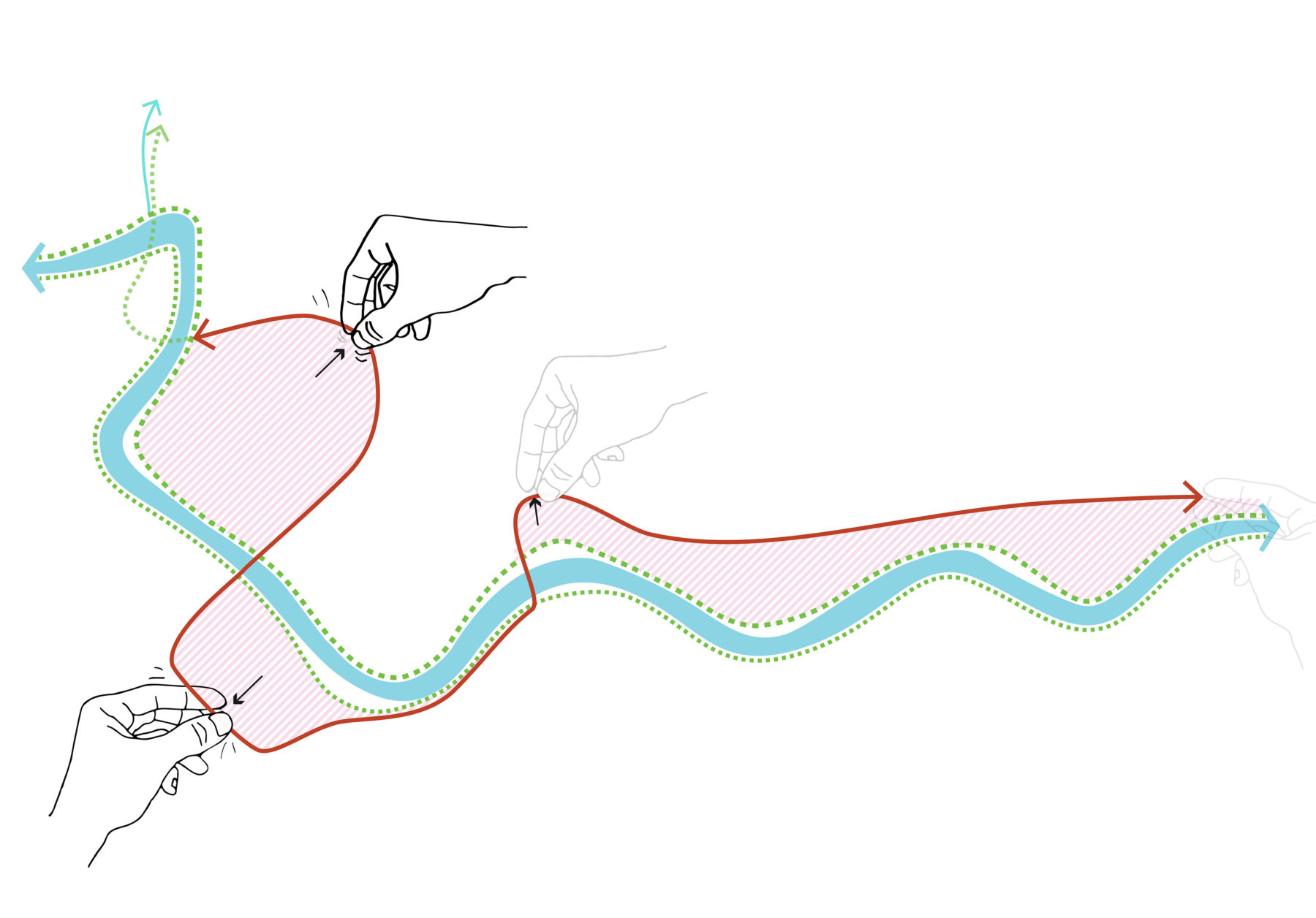
The premise of the narrow existing water edge as a public destination is strategically extended into the adjacent neighborhoods to create the perception of a much larger waterfront district
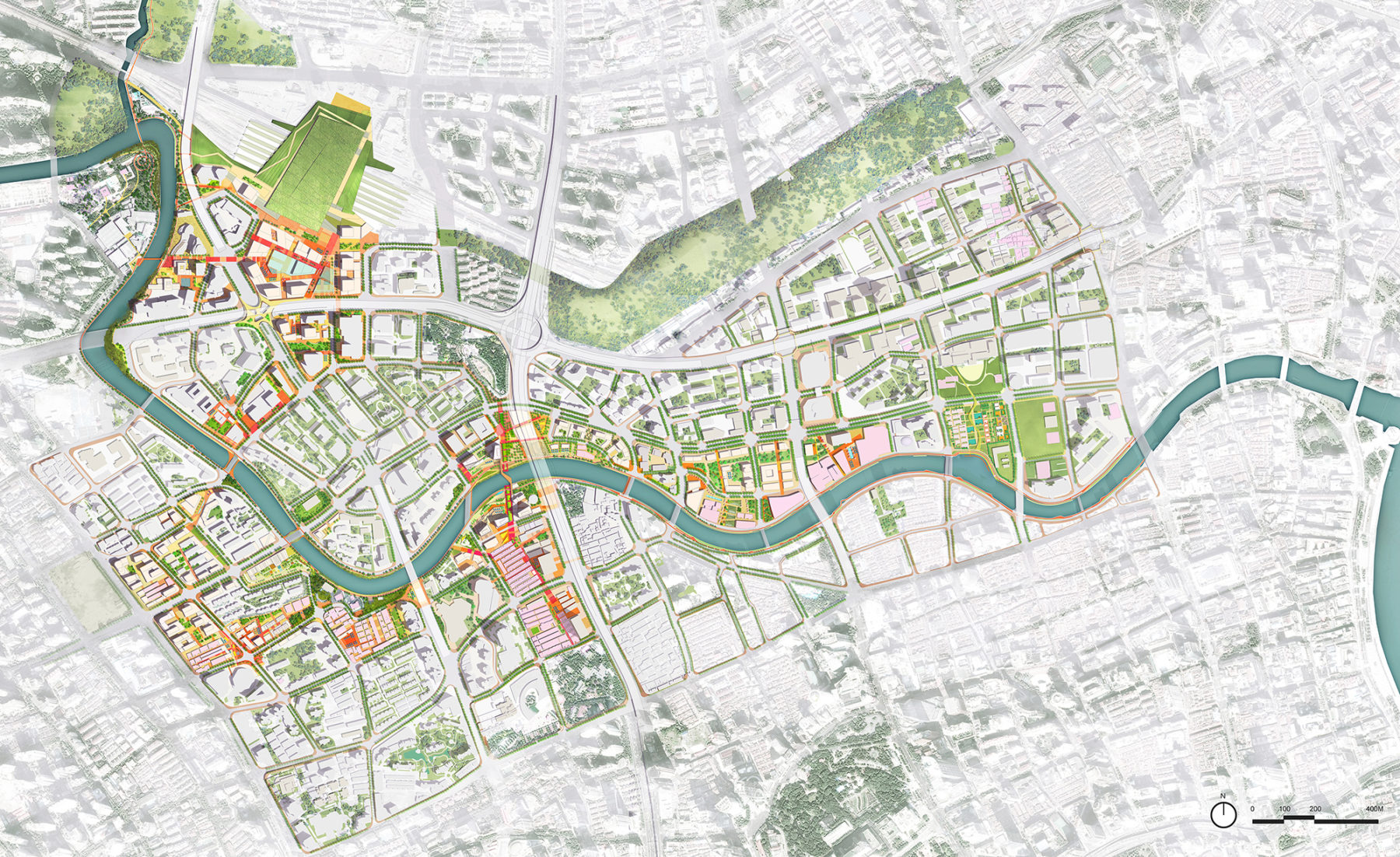
A series of riverfront nodes stitch together distinctive neighborhoods and unify historically divided districts on the opposite sides of the creek.
Seeing the opportunity to unleash Suzhou Creek’s potential, Sasaki focused on expanding the perceived waterfront of Shanghai into the urban blocks adjacent to the creek. This reclamation of Suzhou Creek for public use creates an urban/cultural watershed that is delineated by recreational waterfront edges and a vibrant urban frontage. Isolated neighborhoods are energized by adding new mixed-use development and strengthening connections to nearby destinations such as Shanghai’s central railway station and the M50 Arts District.
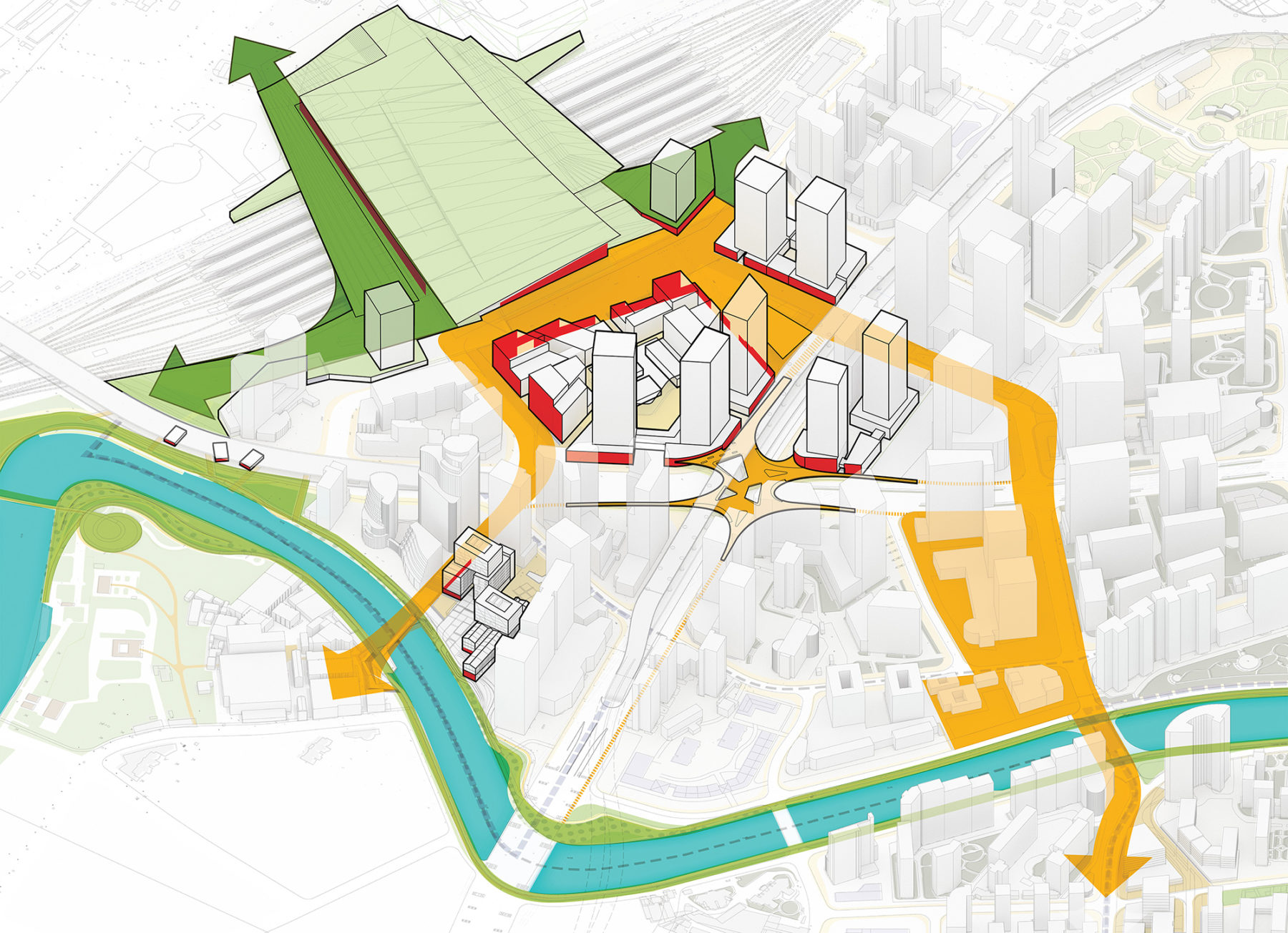
Shanghai’s outdated central train station is strategically integrated into the design as a critical urban transportation anchor.
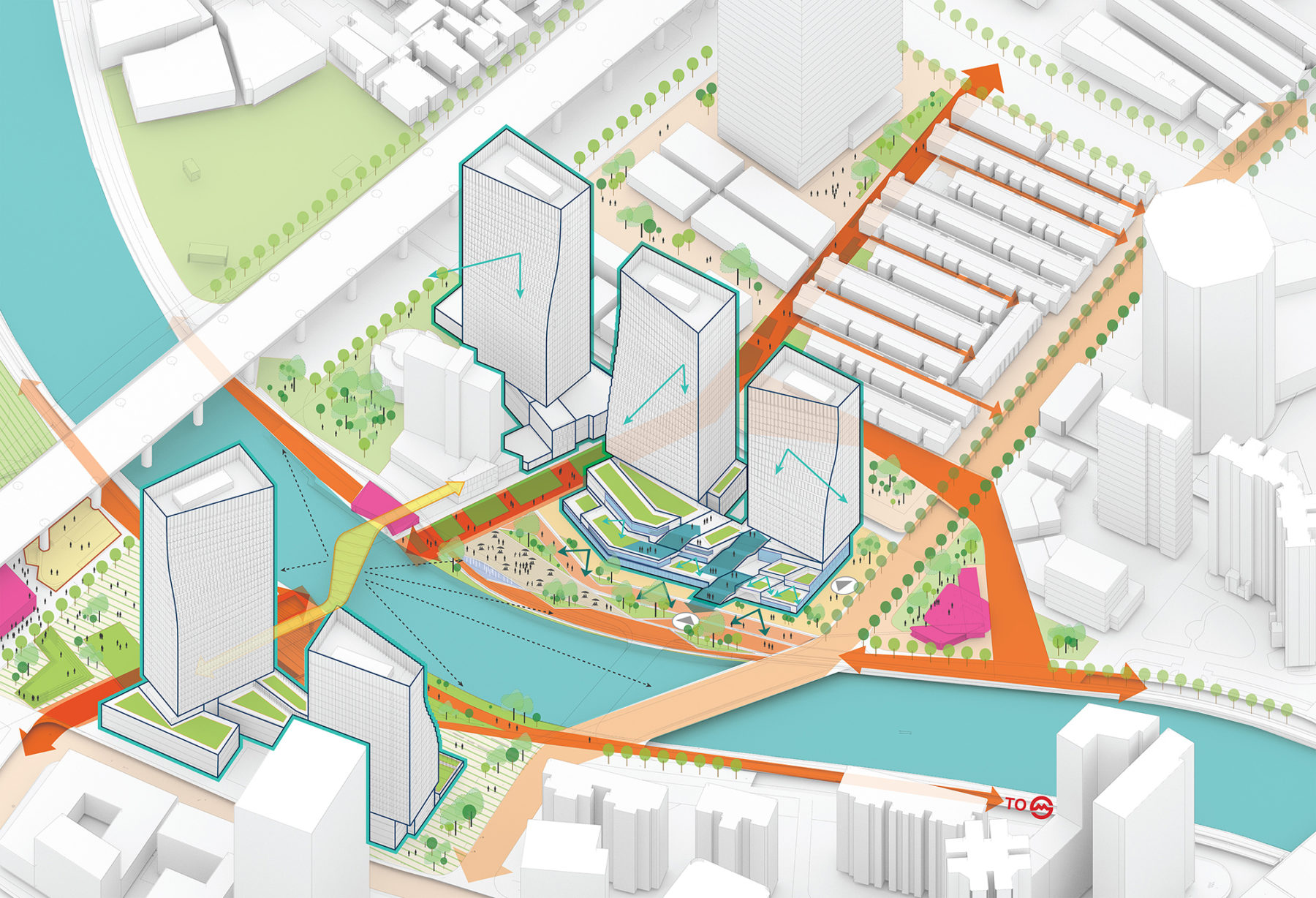
The Gonghexin Urban Node will become one of the most vibrant waterfront destinations in Shanghai, and will serve as a gateway to the vernacular neighborhoods to the south.
By avoiding the preconceived idea of the creek as an exclusively linear experience, the Sasaki plan reorganizes the singularity of the waterway into multiple episodes of urban nodes and parks that anchor rhythmic moments along the creek. Parks are spaced no more than 500 meters apart, celebrating the city’s long-held desire for more community-oriented open space, and allowing for the creek to dynamically engage with the surrounding neighborhoods. Within these neighborhoods, Shanghai’s unique vernacular architecture and intricate pedestrian networks are preserved with minimal, strategic interventions that transform them into new mixed-use destinations while retaining their existing character. Historic warehouses along the creek are repurposed as cultural destinations to further strengthen the area’s burgeoning arts scene.
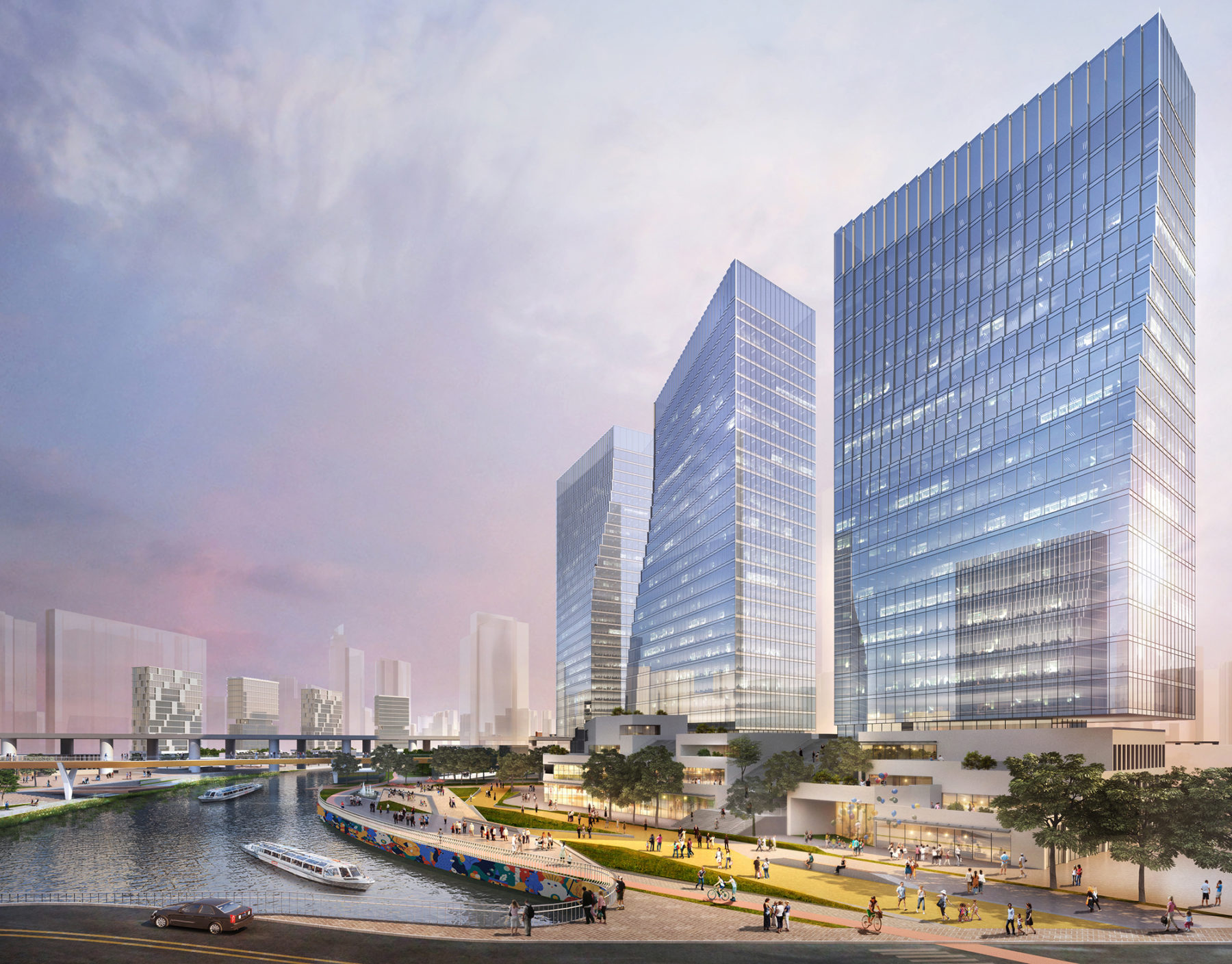
Architectural approaches maximize views to the water, and additional open space along the creek accommodates a multitude of outdoor activities.
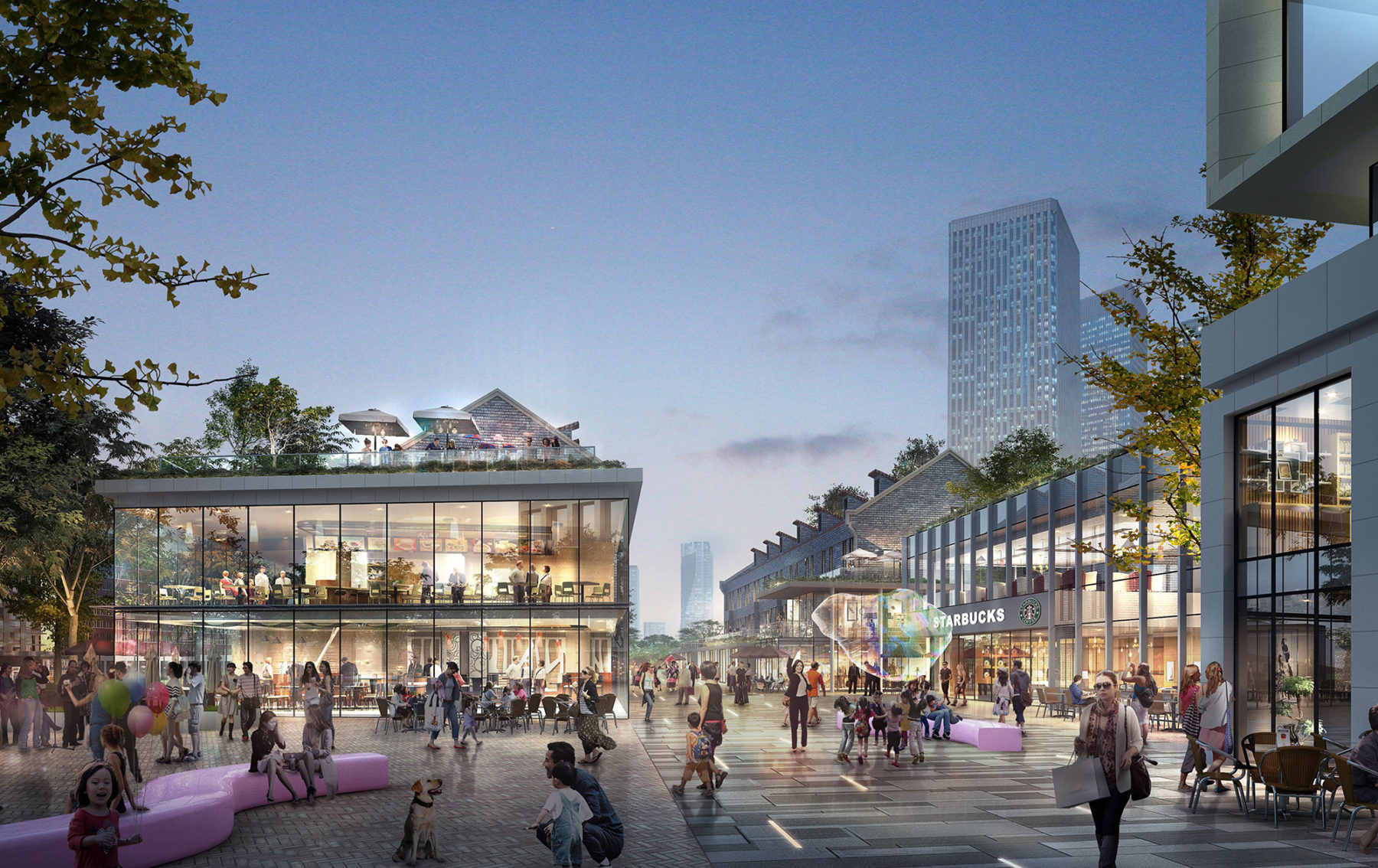
Urban revitalization invigorates vernacular neighborhoods with new program and social spaces, while also striving to preserve the unique character of the historic architecture.
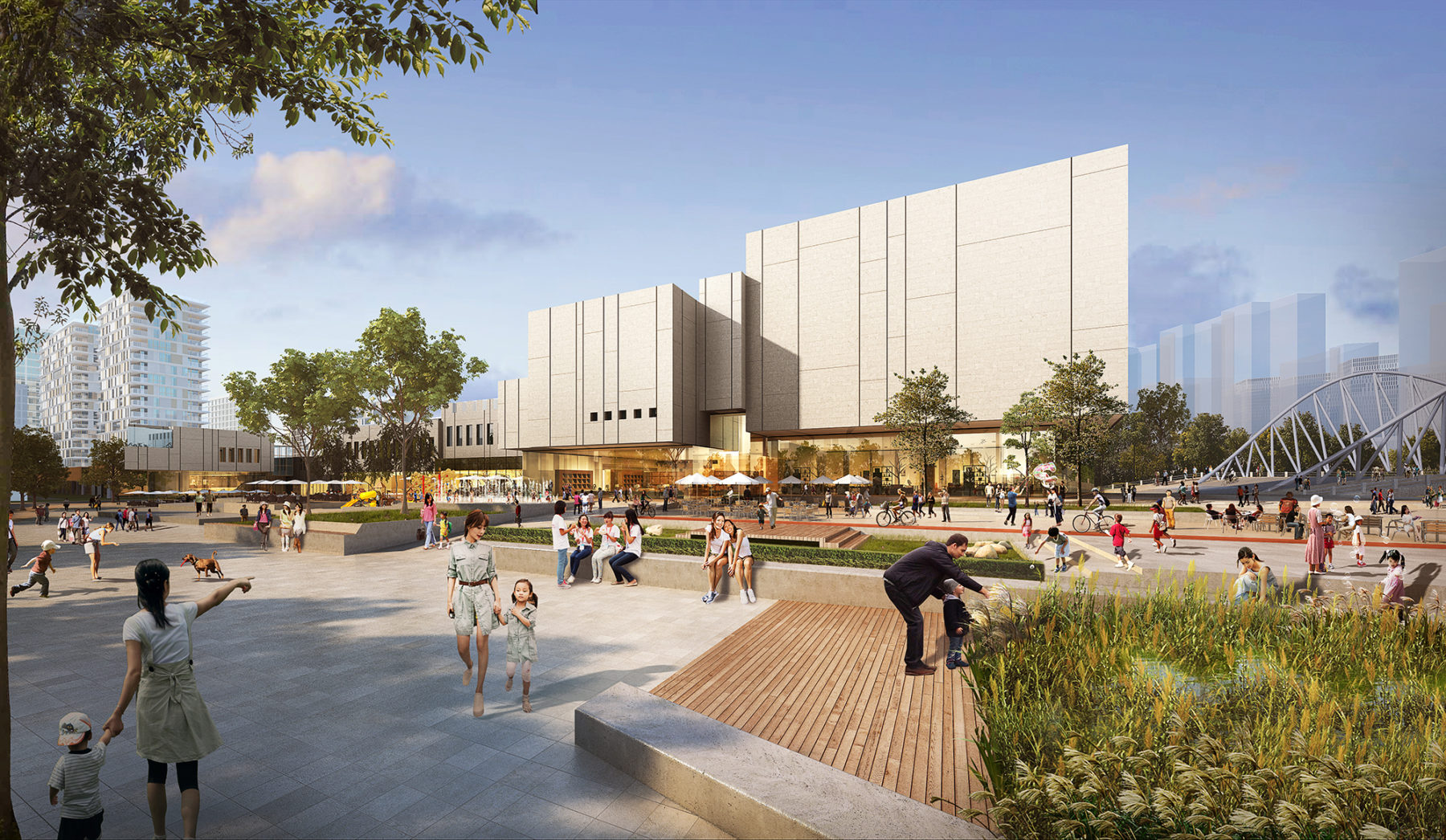
A large community park offers intimate spaces for a variety of users and features wetland gardens that promote environmental education.
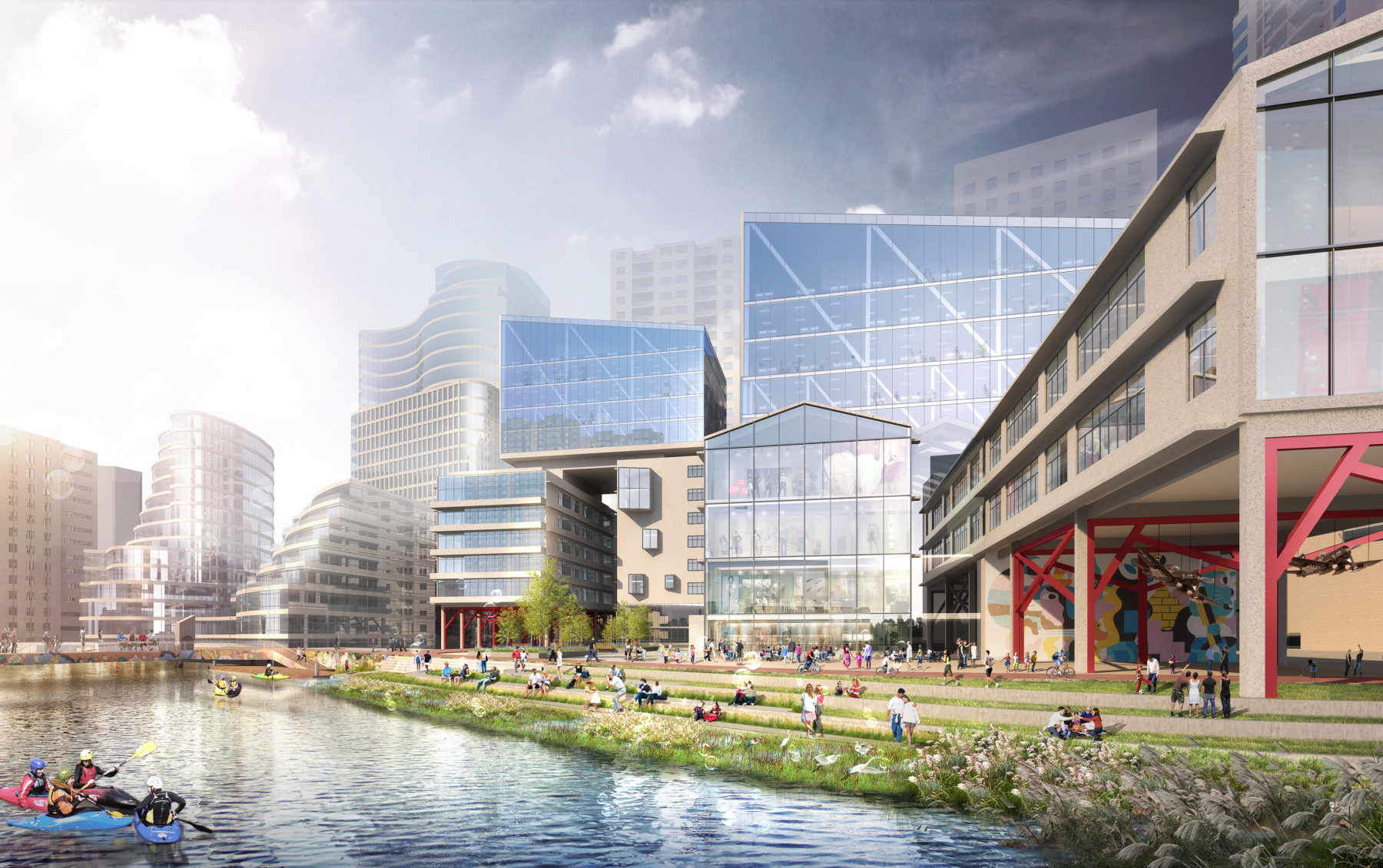
The lower levels of the historic warehouses are transformed into open art galleries, providing an extension of the riverfront landscape.

A pedestrian bridge connects atrium roof gardens on either side of the waterway, offering long vistas to the meandering creek.
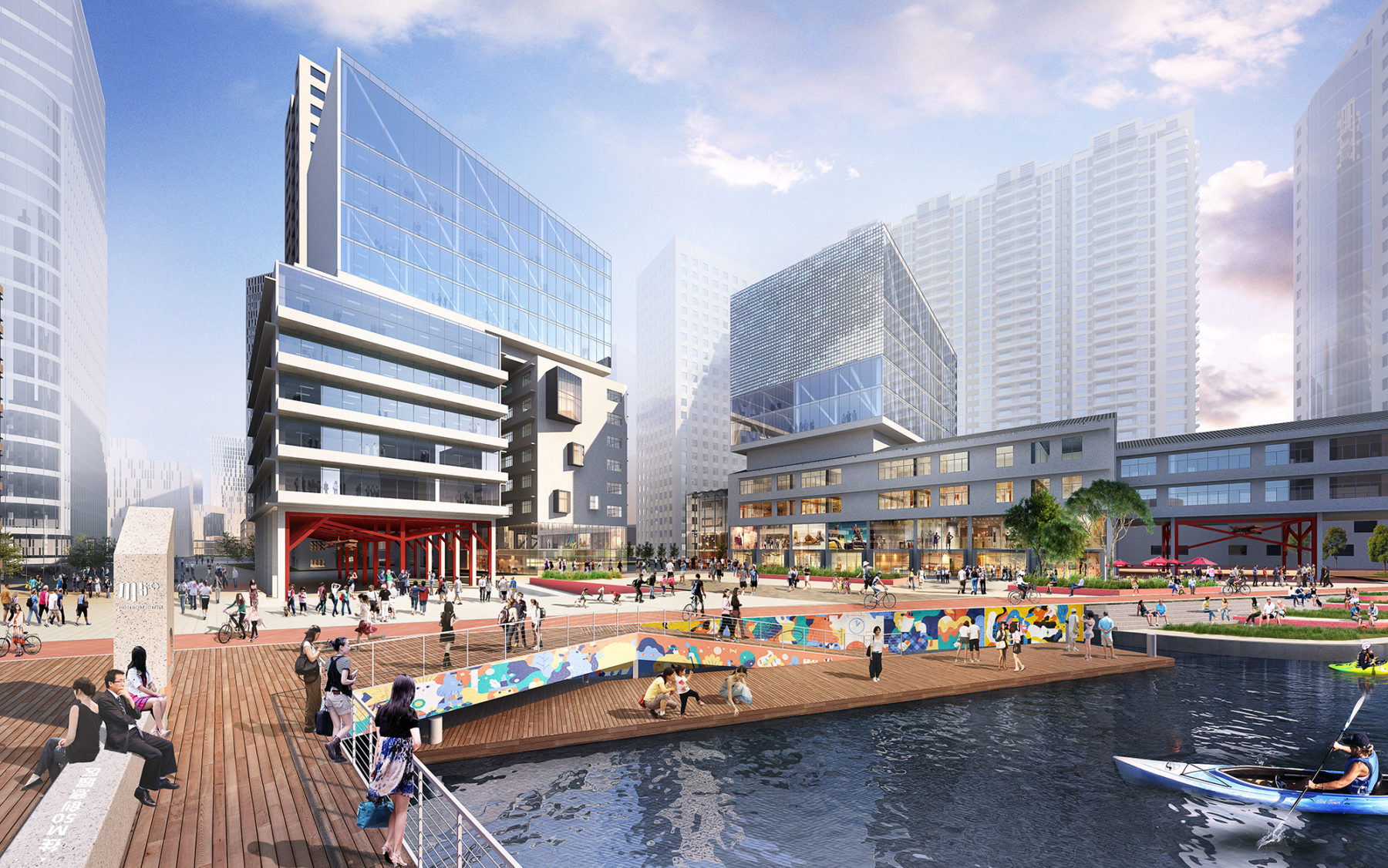
A riverfront plaza connects Shanghai’s Central Train Station to Suzhou Creek as a gateway to miles of urban activities along the waterway.
Architectural approaches maximize views to the water, and additional open space along the creek accommodates a multitude of outdoor activities.
Urban revitalization invigorates vernacular neighborhoods with new program and social spaces, while also striving to preserve the unique character of the historic architecture.
A large community park offers intimate spaces for a variety of users and features wetland gardens that promote environmental education.
The lower levels of the historic warehouses are transformed into open art galleries, providing an extension of the riverfront landscape.
A pedestrian bridge connects atrium roof gardens on either side of the waterway, offering long vistas to the meandering creek.
A riverfront plaza connects Shanghai’s Central Train Station to Suzhou Creek as a gateway to miles of urban activities along the waterway.
Sasaki also reevaluated the ecological potential of Suzhou Creek, considering its unrealized capacity to serve as landscape infrastructure. Wherever space allows, wetland terraces are introduced to restore native habitat, mitigate the impacts of occasional flooding, and provide opportunities for people to get close to the water. When the need for a floodwall is unavoidable due to tighter conditions, the once utilitarian infrastructure is transformed into an urban art gallery that reimagines the vertical structure as a canvas to celebrate local talent.
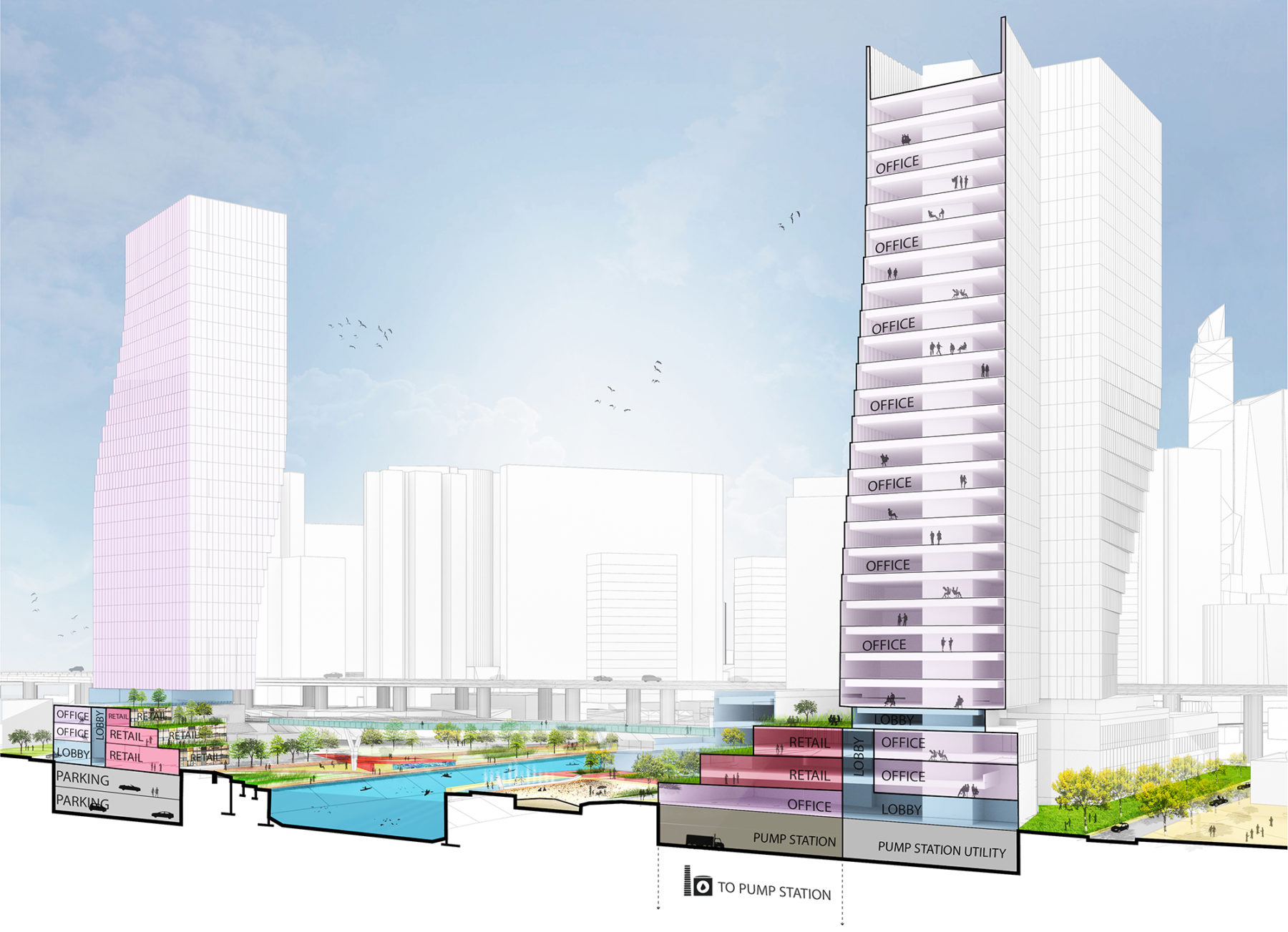
Complex underground infrastructure is integrated with terraced roof gardens to become an extension of the waterfront open space.
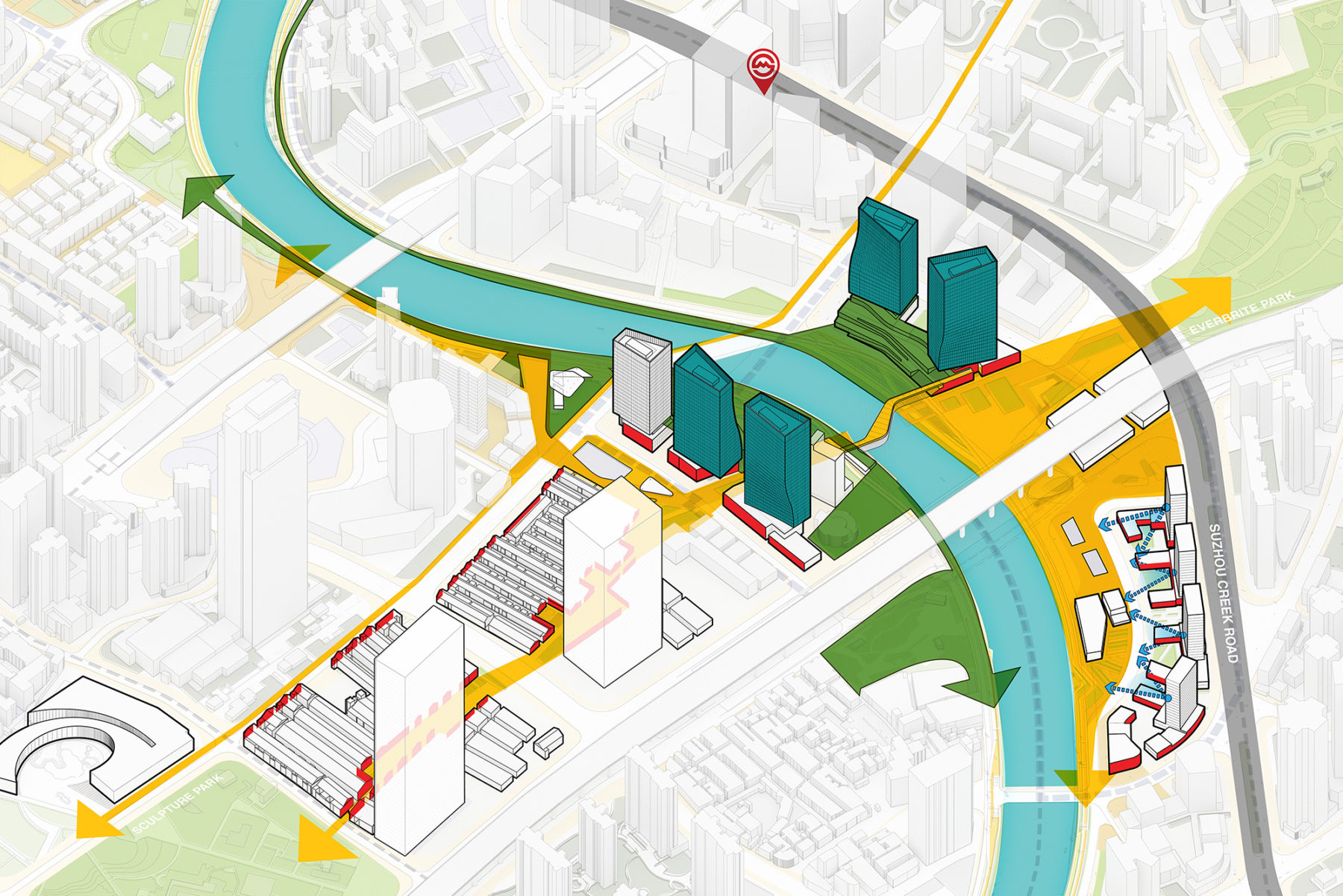
The Gonghexin Urban Node is a critical connector for the new riverfront corridor and a stepping stone between existing parks to the north and south.
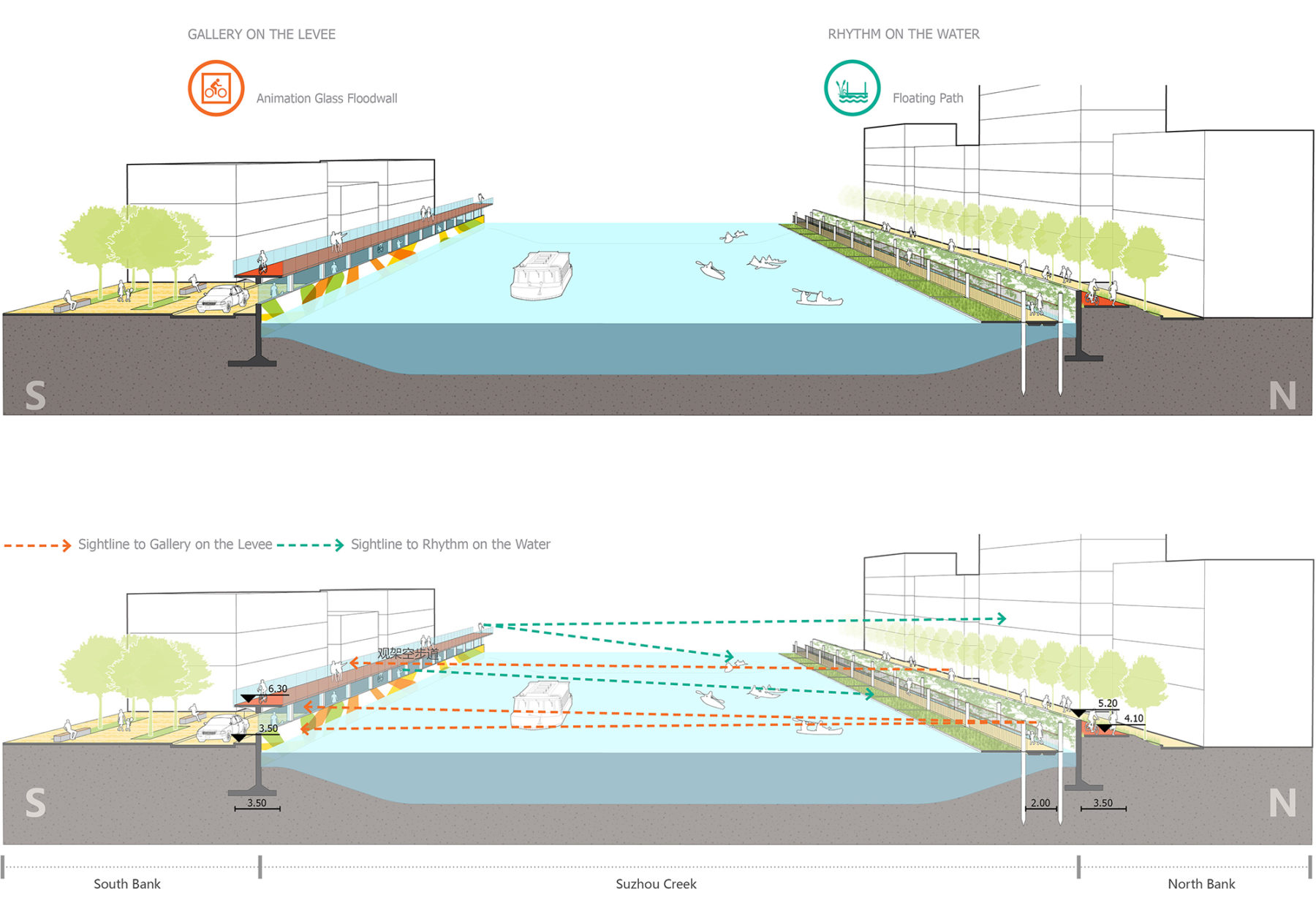
The opposite banks of the creek offer each other different views, creating a diversity of spatial experiences and distinctive identities.
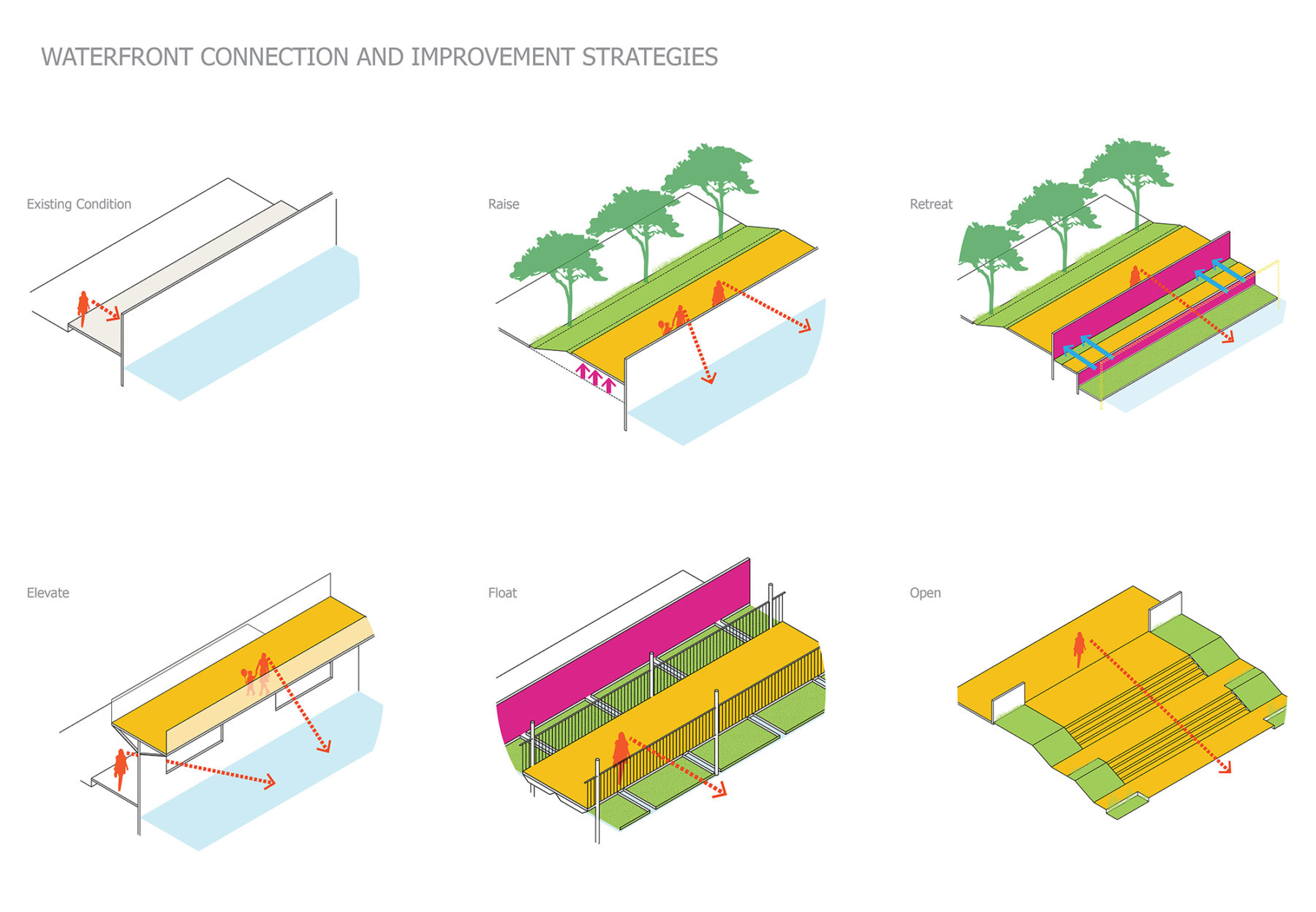
Accessibility, visual connectivity, and flood control are evaluated holistically to offer a variety of functional yet elegant solutions for addressing the creek’s complex infrastructure.
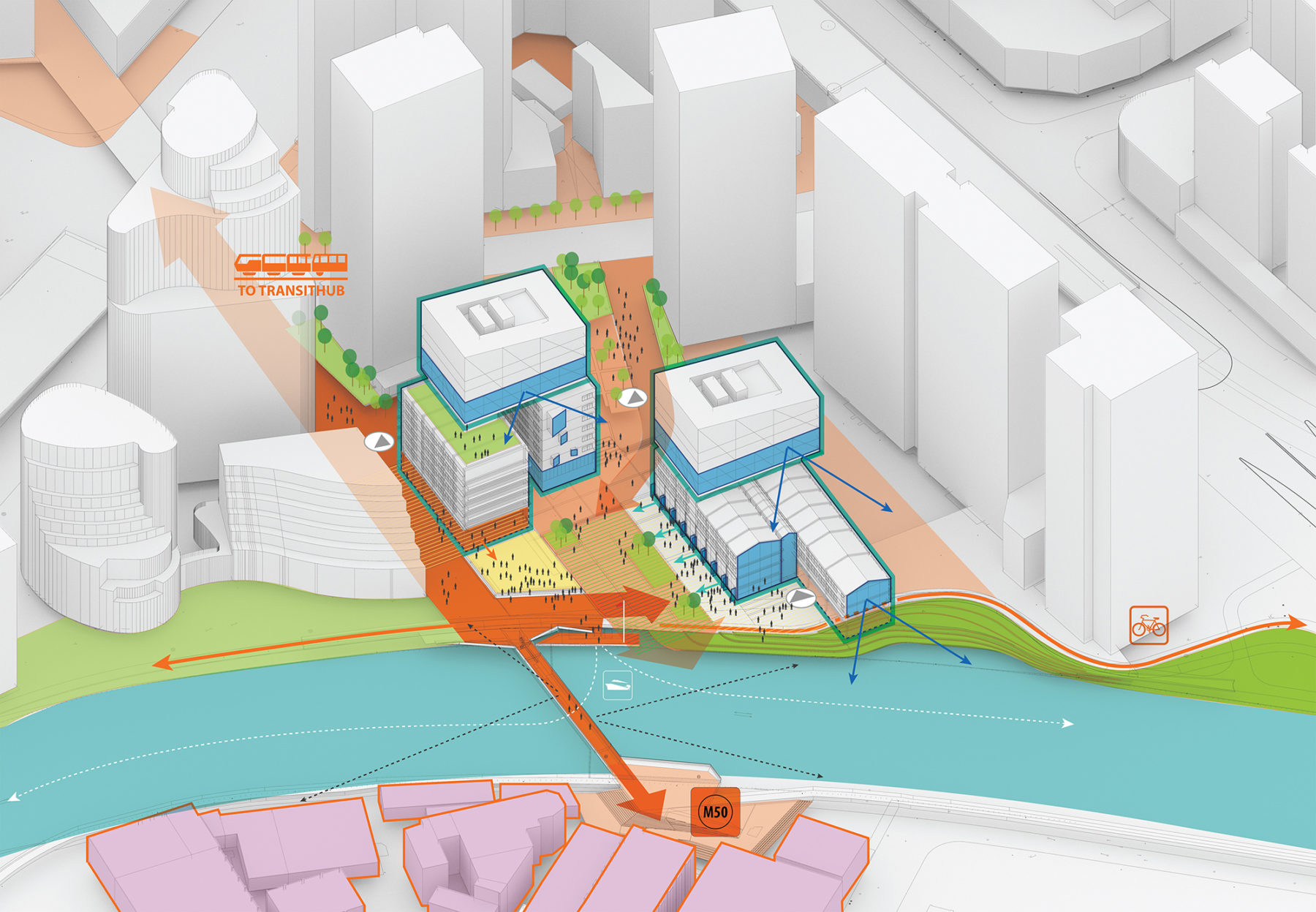
The creek’s industrial heritage is celebrated with a new riverfront plaza linked to M50 art district with a consistent architectural language.
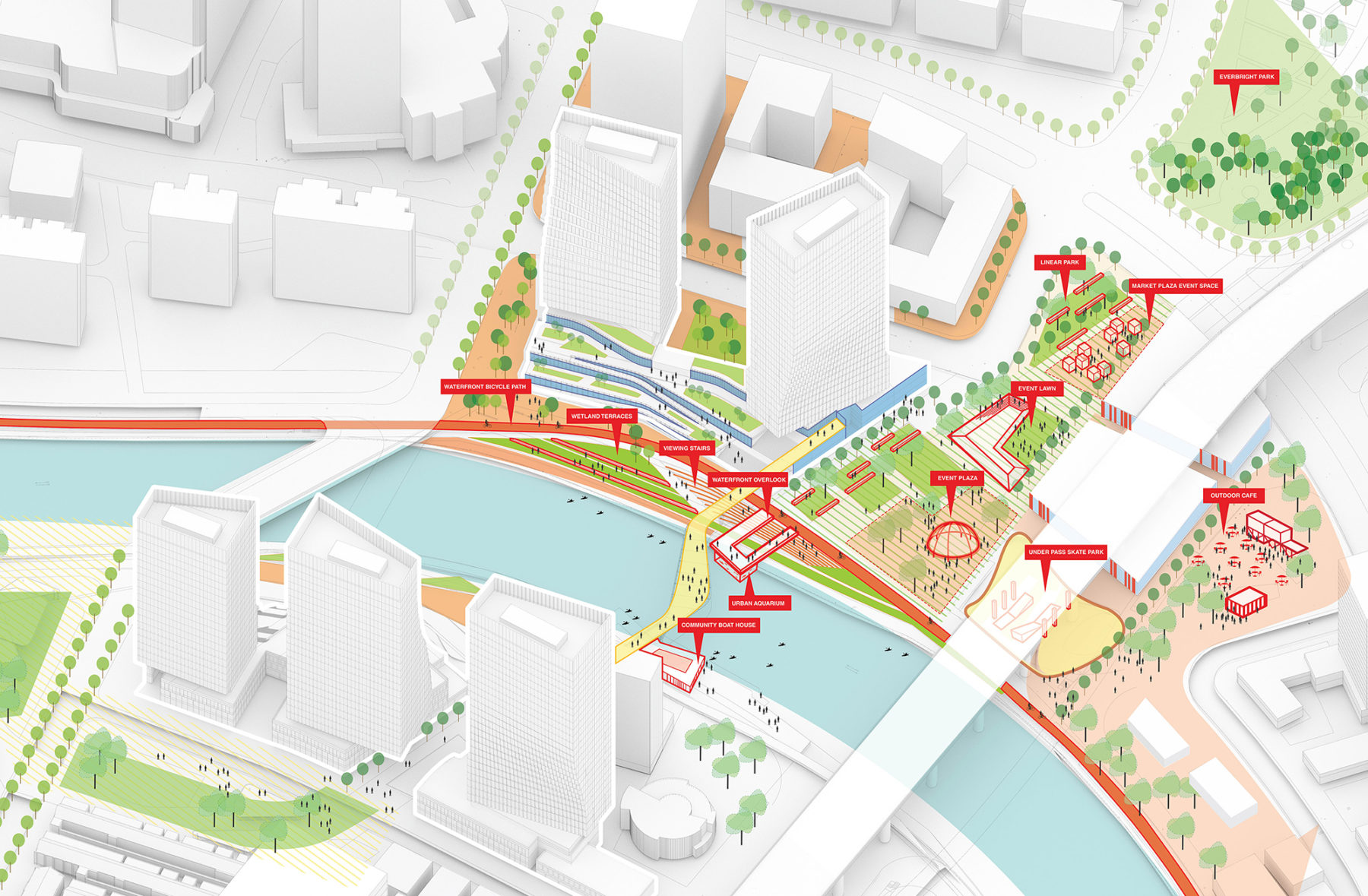
The converging energy and pedestrian activity from all directions make the Gonghexin Urban Node a key destination for offering a diverse outdoor program.
For more information contact Michael Grove.
Related Voices
Suzhou Creek: Reclaiming Shanghai’s Industrial Waterway
Sasaki’s urban design strategy centers on the concept of “push, pull, bridge, and extend” to re-stitch the city fabric on either side of Suzhou Creek
China’s Urban Revival: Lessons Learned
Urban renewal in China has been interwoven with its unprecedentedly swift urbanization over the past forty years. Sasaki's Dou Zhang and Ming-Jen Hsueh reflect on the rapid pace of change and lessons learned.

